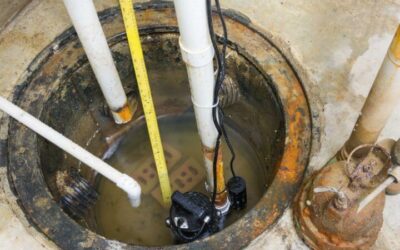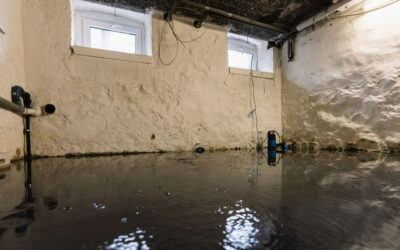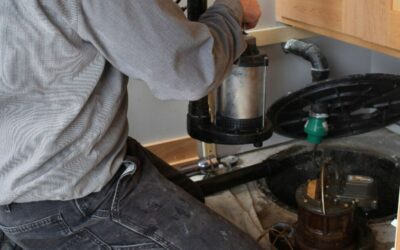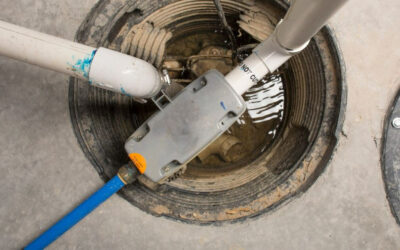A sump pump is your best protection against flooding in your basement during the potentially wet spring season. This essential device is nestled into your home’s lower regions, ready to collect and expel water that starts to pool around the building’s foundation. A surprise people often find is that there are multiple types of sump pumps available – ranging from pedestal to submersible versions – so choosing the right one can make all the difference. Preparing for Spring has never been easier with T&J Rooter Service sump pump installation and repair services in Toledo, Ohio.
T&J rooter are Toledo, Ohio Plumbers you can count on for any and all sump pump installation and repair needs.
To prevent flooded basements in the spring, consider installing a sump pump to remove excess water and prevent damage. Sump pumps automatically collect and redirect water away from your home, thwarting potential flooding issues. Contact our team for professional installation and maintenance services to safeguard your basement from water damage.
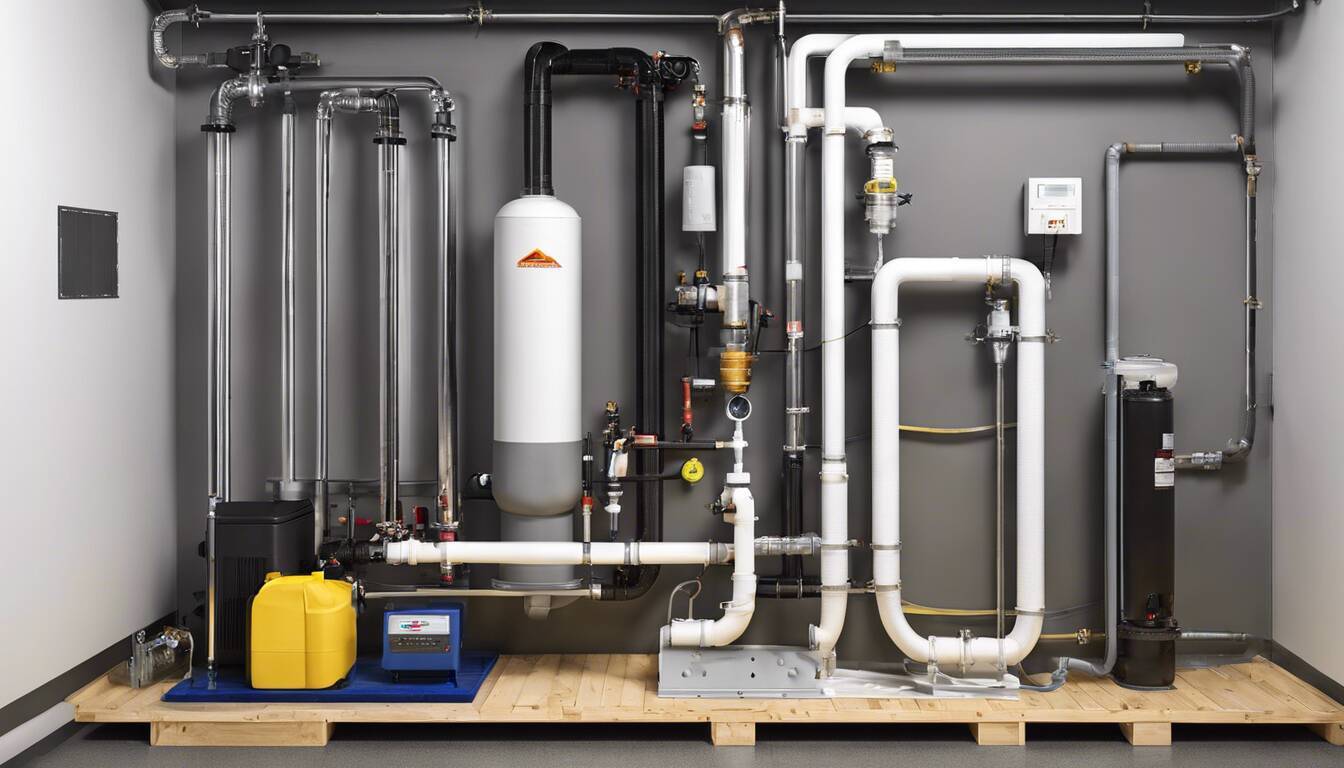
What is a Sump Pump?
Imagine your basement or crawl space as a fortress vulnerable to water invasion. Water from snowmelt, heavy rain, or rising groundwater can breach this fortress, causing seepage and potential flooding. Enter the sump pump, your trusty guardian against these threats. Installed at the lowest point in your basement or crawl space in a specially constructed pit known as a sump pit, it stands vigilant, ready to protect your home from water damage.
The sump pump’s pithy setup is no mere happenstance; its location allows it to gather water before it has a chance to pool on your floor. When water levels rise due to flooding or excessive moisture accumulation, the sump pump springs into action, swiftly collecting the water and then pumping it out of your home, keeping your foundation dry and secure.
Picture an electronic horse whisperer constantly on the lookout for signs of danger. The moment it spots any excess moisture inching towards your home’s foundation walls, its electrically powered motor kicks in. The pump propels stored water through a pipe leading outside—a savvy escape route that ensures the water is directed away from your basement and foundation.
Sump pumps come in various types, each with specific features tailored to different needs. There are pedestal pumps, which keep crucial components above water level, making maintenance easier. Submersible pumps reside entirely underwater in the sump pit, operating quietly and efficiently. Both types serve the same purpose—keeping your space dry.
Understanding how a sump pump keeps water at bay lays the groundwork for appreciating the diversity of options available to suit varying home setups; let’s now explore these variations and their functionalities further.
In uncovering the intricate workings of sump pumps and their role in protecting your home from water damage, we are primed to delve into the importance of maintaining these systems as spring showers approach.
Importance of a Sump Pump in Spring
As the weather warms up, the snow begins to melt, and heavy rains become more prevalent. This combination can lead to excessive water buildup around your home, often putting your basement at risk of flooding. A sump pump is your first line of defense against this threat. It effectively manages the increased volume of water, preventing it from seeping into your basement and causing extensive damage.
When water accumulates in your basement, it can wreak havoc on your property. The potential damage doesn’t just stop at ruined belongings; it also poses a significant health risk through mold growth and impacts the structural integrity of your home.
Preventing Costly Water Damage
You may think that you’re safe if you haven’t experienced flooding before, but it’s important to remember that heavy rainfalls and thawing snow can quickly change circumstances. A sump pump serves as an insurance policy for your home – ensuring that even if water accumulation becomes excessive, its presence can mitigate potentially catastrophic outcomes.
Mold thrives in damp environments, and once established, it can be challenging to eliminate. Beyond compromising indoor air quality, mold is a health hazard, especially for those with respiratory issues or allergies.
Having a sump pump is akin to having a silent protector standing guard over one of the most vulnerable areas of your home.
Regular maintenance of your sump pump is crucial. Check that it’s working correctly before spring arrives so that when the peak season hits, you can have peace of mind knowing that your investment will keep your basement dry in the face of adverse weather conditions.
By installing a sump pump, you’re not only safeguarding your property and personal health but also avoiding costly repairs that could result from flood-related damage. Spring showers and melting snow are nature’s way of testing the resilience of our built environment. With a reliable sump pump system in place, you’re stepping up to pass these tests with flying colors.
Preparing Installation: Leveling and Drain Pipe Networking
Installing a sump pump involves more than just placing it in a hole and plugging it in. Several detailed steps must be followed to ensure it effectively mitigates potential flooding. One of the crucial first steps is leveling the sump pit.
The sump pit needs to be level to allow proper water collection and ensure the sump pump functions as intended. If the pit is uneven, it can lead to operational issues and reduced efficiency. Professionals use a leveling tool or a spirit level to guarantee that every side of the pit is at an equal height. This helps prevent any water from pooling in one area, ensuring that all water is directed towards the sump pump for removal.
Once the sump pit has been leveled, one of the most critical parts of the installation process involves connecting the sump pump to the drain pipes. Proper networking of the drain pipes is crucial for directing water away from the foundation, preventing water from seeping into your basement.
The drainage network should be carefully evaluated to ensure effective water removal. This includes checking that all drain pipes are clear and free from debris, as blockages can impede the flow of water away from your home. It’s also important to direct the water away from areas where it can pool near your foundation, which could lead to potential flooding issues in the future.
Professional installation ensures that everything is properly connected and functional, giving you peace of mind that your sump pump system is ready to protect your home when needed.
Ensuring that your sump pit is properly leveled and connecting it to an effective drain pipe network are essential steps in preparation for installing a sump pump system. These steps play a significant role in maximizing the efficiency and effectiveness of your sump pump, contributing to comprehensive protection against potential basement flooding.
Understanding Groundwater Management
Imagine the earth beneath your home shifting like a slow, steady river. Although invisible, groundwater is constantly on the move. When spring arrives, melting snow and frequent rain make the soil near your home’s foundation even more saturated with water. Excess moisture in this area can lead to mold, mildew, and bacterial problems that affect both your home and your health.
The sump pump plays a critical role in managing these groundwater dynamics. It’s like a vigilant sentinel guarding against the intrusion of water into your basement or crawl space. By efficiently collecting excess water in a sump pit and diverting it away from your home’s foundation, it ensures that your underground areas remain dry and safe.
Low Land is Prone to Groundwater Trouble Some homes bear the brunt of groundwater problems more than others due to their locations. If your home is situated in an area with low-lying land or poor drainage, the risk of groundwater seepage into your basement increases substantially. In such cases, an effective sump pump system is not just a luxury; it becomes an absolute necessity to protect the structural integrity of your property.
Optimal Sump Pump Functionality
Maintaining optimal sump pump functionality hinges on understanding the unique groundwater levels and dynamics specific to your property. For instance, heavy rainfall or rapid snowmelt can dramatically elevate groundwater levels in a short span of time, posing a significant threat to your basement or crawl space.
For example, excessive water pressure against the foundation can lead to cracks in the walls, seepage through the floor, or even outright flooding. Hence, being aware of these high-risk periods allows you to preemptively take action by ensuring that your sump pump is in top working condition.
These insights enable you to make informed decisions about any necessary upgrades or repairs to your sump pump system well before potential flooding becomes an issue. This proactive approach can save you from costly repairs and help maintain a safe and dry environment within your home.
When it comes to safeguarding your basement against the perils of rising water levels, understanding optimal installation processes can be invaluable. Let’s now pivot towards uncovering the step-by-step approach to sump pump installation and maintenance.
Step-by-Step Sump Pump Installation Process
When preventing water damage in your basement, sump pump installation is a crucial step. Here’s a detailed breakdown of the steps involved:
Sump Pit Preparation
Before starting, carefully excavate and prepare the sump pit in the lowest part of your basement or crawl space. The pit needs to be deep enough to accommodate the sump pump and wide enough to allow for proper drainage. Ensure it’s clear of debris or obstructions for efficient water collection.
The sump pit is the heart of the system; it collects and contains water before it can damage your property. Proper preparation and excavation are critical as they form the foundation for the entire sump pump system.
Pump Selection
Choosing the right sump pump is crucial and largely depends on your property’s specific needs. Submersible pumps are more discreet and efficient but may cost more than pedestal pumps. Your choice should align with your budget and long-term expectations.
For instance, if your basement is prone to flooding or experiences heavy water flow, a dual-powered sump pump with a battery backup might be ideal.
Electrical Wiring
Sump pump electrical wiring is best handled by professional electricians to ensure safety and code compliance, especially in wet environments like basements or crawl spaces.
Ensuring that your sump pump is wired correctly goes a long way in safeguarding against potential electrical malfunctions or hazards down the line.
Drain Pipe Connection
Once the sump pump is in place, it needs to be connected to a drainage system for optimal water removal without causing nearby erosion or pooling issues.
The correct connection of the drain pipe is key for seamless water removal, preventing future headaches caused by poorly managed runoff around your property.
Testing and Activation
After completing installation and connecting all components, thoroughly test the sump pump to ensure it activates automatically in response to rising water levels. Regular testing helps verify that everything works as expected and catches any potential issues before they become major problems during adverse weather conditions.
By meticulously following these installation steps, you’re significantly reducing the risk of potential water damage in your basement, ensuring that your home remains safe and dry even in adverse weather conditions.
As we navigate through the depths of sump pump maintenance, let’s unravel the integral aspects that keep this essential equipment in top-notch condition.
Integral Aspects of Sump Pump Maintenance
Ensuring the proper maintenance of your sump pump is crucial in preventing basement flooding. Here are some essential steps to keep your sump pump running smoothly and your basement dry.
Regular Inspections
Frequent visual inspections and testing are imperative to ensure the sump pump is in optimal working condition. Every few months, it’s a good idea to pour water into the sump pit to verify that the pump activates and drains the water properly. This straightforward test can provide peace of mind, knowing that the pump will function when it’s needed most. Moreover, check for any unusual noises or vibrations during operation, as these might indicate a problem that needs attention.
Cleaning and Debris Removal
Periodic cleaning is vital to prevent obstructions and enhance pump efficiency. Over time, debris like dirt, gravel, or small stones can accumulate in the sump pit and cause clogging or disrupt the float switch mechanism. Carefully remove any debris found in the pit and wipe away any accumulated dirt on the surface of the pump. Typically, cleaning should be done every 3-4 months to ensure unobstructed functionality of the sump pump.
Think of maintaining your sump pump like maintaining a garden. You wouldn’t want weeds to grow around your favorite plants, would you? Similarly, keeping your sump pit clean and free of obstructions ensures that your sump pump works efficiently during heavy rainfall or melting snow, preventing potential water damage.
Battery Backup Checks
Regular battery checks are crucial for pumps equipped with battery backups to ensure reliability during power outages or failures. Typically, batteries require replacement every 2-3 years, so it’s important to note their expiration date and replace them as necessary. Additionally, perform periodic tests to verify that the backup system engages properly in case of a power outage, ensuring that your basement remains protected even when there’s no electricity.
By adhering to these maintenance practices, not only do you prolong the lifespan of your sump pump but also safeguard your home from potential water damage and flooding. Regular inspection, cleaning, and testing form the trifecta of efficient sump pump maintenance—a small investment that potentially saves thousands in flood cleanup costs.
Maintaining a functional sump pump is just one part of ensuring a dry and secure basement. Now, let’s delve into some crucial tips for troubleshooting flooded basements.
Crucial Tips for Troubleshooting Flooded Basements
Dealing with a flooded basement can be deeply stressful and frustrating, especially when it occurs unexpectedly. Here are some crucial tips to help you troubleshoot and address issues related to sump pump failure or basement flooding.
Double-Check Power Supply
The first thing to do when you notice basement flooding is to verify that the sump pump is receiving power. Check for tripped breakers or electrical failures that could lead to the pump being inactive. Ensuring a consistent power supply to the sump pump is essential for its proper functioning, so resolving any electrical issues should be the first step in troubleshooting.
Perform Pump Activation Testing
Regular testing of the sump pump is crucial to ensure it activates as expected. This involves manually triggering the sump pump to turn on and checking if it effectively removes water from the pit. Performing this test regularly, especially before periods of heavy rainfall or snowmelt, helps you catch potential issues with the pump’s functionality beforehand.
Regular testing of the sump pump might seem like an extra hassle, but it serves as an insurance policy against basement flooding. Just as you would want to make sure your car starts before a long road trip, performing these tests on your sump pump ensures that it’s ready to protect your basement when needed most.
Seek Professional Servicing
While regular maintenance performed by homeowners is important, nothing compares to the expertise and thoroughness of professional plumbing services. Consulting professionals for annual inspections and maintenance can uncover potential issues before they cause problems and ensure that your sump pump remains effective in preventing basement floods.
Professional servicing provides peace of mind, knowing that your sump pump has been thoroughly checked by experts who have the knowledge and experience to identify and address any underlying problems. Investing in professional maintenance can save you from expensive repairs or replacements caused by avoidable malfunctions or breakdowns.
By diligently checking the power supply, regularly testing the sump pump activation, and seeking professional servicing, you can troubleshoot potential issues with your sump pump and prevent basement flooding before it becomes a major problem.

